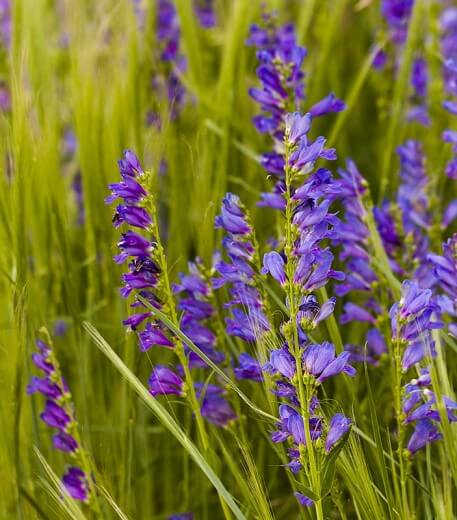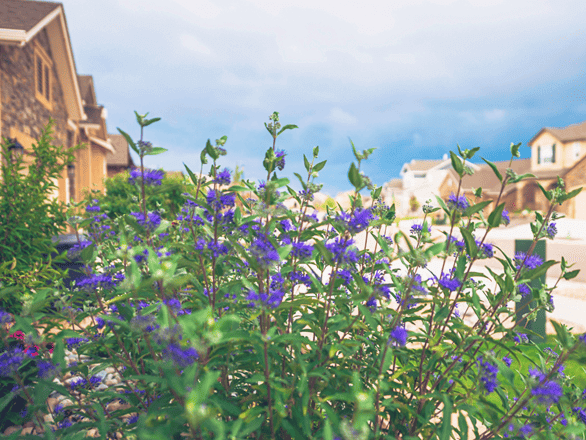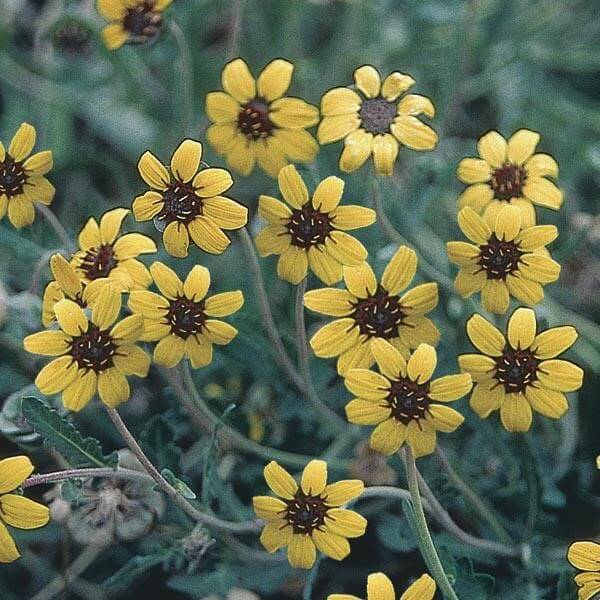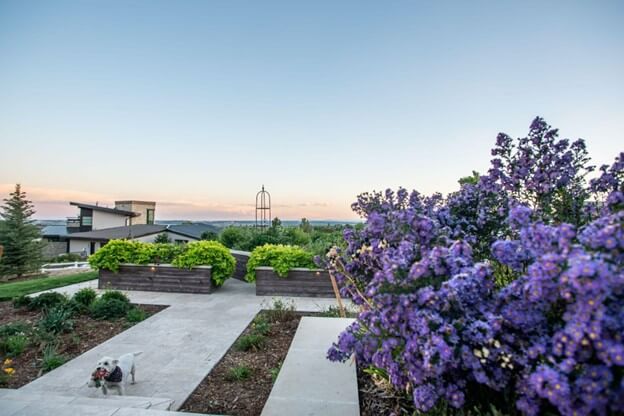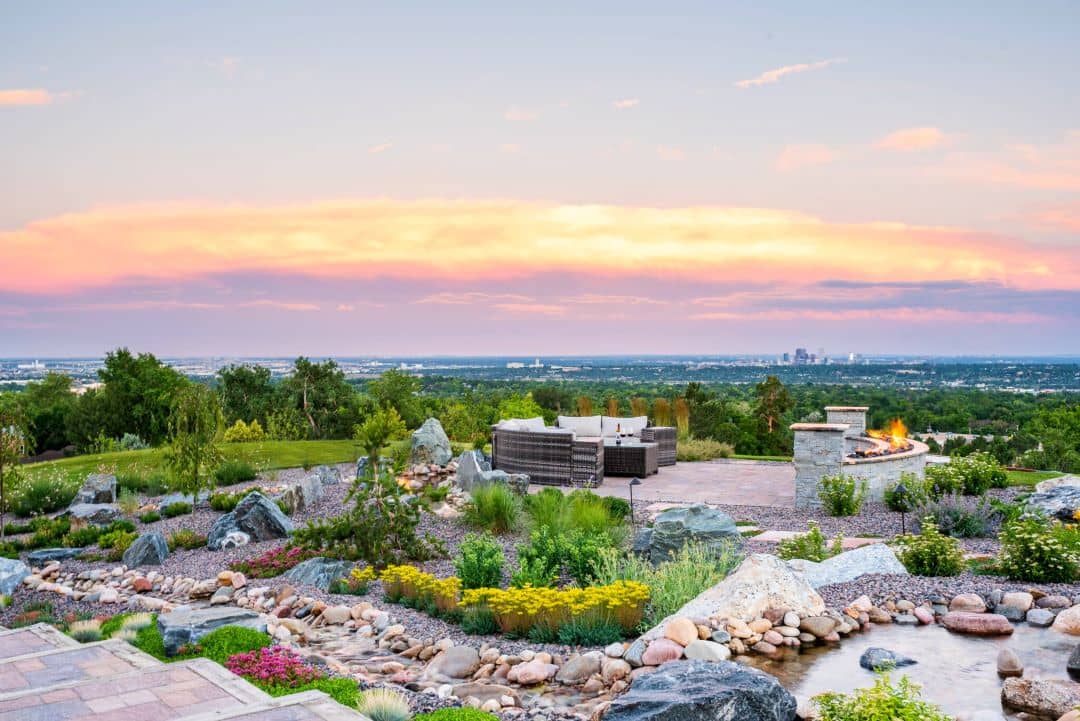
Drought-Tolerant Landscaping
What Is Drought-Tolerant Landscaping?
When the word drought is mentioned, it can usually mean several things like a dry spell, prolonged water shortages, and an insufficient amount of precipitation. What happens when you design a landscape that can tolerate such conditions? You make it favorable for the area to thrive with minimal moisture and in many dry conditions. Drought-tolerant landscapes have become a popular theme over the years. It is very low maintenance, while still carrying sheer quality all around. These types of builds and designs can consist of native plants, drought-tolerant selections, water-efficient plants, gravel, boulders, stone, and wood mulch.
Through this article, you will learn about the many questions asked about drought-tolerant landscaping, ideas on how to build your drought-tolerant landscape, tips, tricks, and much more.
What Is the Meaning of Drought Tolerance?
Drought-tolerant is the capable feature in which a plant or landscape style can tolerate arid conditions. Being able to conserve your water by minimizing water usage and plants won’t deteriorate because of their ability to thrive in such conditions.
What Makes a Plant Drought Tolerant?
The characteristics that make a plant drought-tolerant are the ability to conserve water and being able to evolve and adapt to dry climates for long periods. These characteristics are split into three different types:
- Drought Avoidance: This is the ability plants have to store vast amounts of water within their tissue especially when the water content is low in the soil.
- Drought Tolerance: The ability to adapt to a variety of drought conditions. Either growing thicker or hairy leaves to reflect heat, reducing leaf size to minimize surface area, and deploying xerophytic conditions like reducing the transpiration rate.
- Desiccation Tolerance: The ability to survive near or extreme points of dehydration. The plants enter a state of anhydrobiosis, which in simpler terms is when the species appears to be dead but once it gains hydration it is then revived in a way.
Difference Between Drought Tolerant & Drought Resistant
The terms drought tolerant and drought resistant are often used interchangeably, and incorrectly so.
Drought-tolerant landscapes can also be referred to as xeriscaping, not to be confused with drought resistance. Xeriscape or xeriscaping is the systemic approach for water conservation usage in plants and design layouts for landscaping. Simply another word for “dry scaping”. When referring to plants that can adapt to these dry conditions, they can be referred to as “xeric” plants.
When it comes to drought resistance, it refers to plants that can thrive without needing water over a long period of time. Very much the opposite when compared to a plant that is adaptable to low-water conditions or standards versus its water retention properties that allows it to survive.
Common Drought-Tolerant Landscaping Plants Used in Colorado
There are many types of drought-tolerant plant species in Colorado, and many options to choose from. You have a wide selection of groundcovers, perennials, cacti, succulents, grasses, shrubs, and trees. Make sure to check your USDA Plant Hardiness map to see if a certain plant can grow in your area. Below you will find species that are commonly used in xeriscaping and a few native to Colorado.
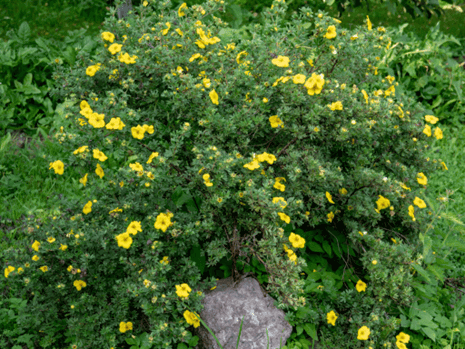
Potentilla
One of Colorado’s native plants is the Potentilla. The shrub comes in a variety of colors like red, orange, pink, and its well-recognized yellow hue. The plant itself can grow up to four feet tall and close to five feet wide. The potentilla is immensely drought-tolerant; the plant can sustain being in dry conditions, cold-temperate regions, salty and air polluted areas. The plant blooms from the spring to nearly fall, so quite a long time. Perfect addition to throw into your drought-tolerant landscape design along the hedges, within your rock garden, get as creative as you’d like with it.
Rocky Mountain Penstemon (Penstemon Strictus)
A native evergreen perennial, the Rocky Mountain Penstemon, also known as the Rocky Mountain Beardtongue. The Penstemon is difficult to miss with its vibrant royal blue and purple colorway. This plant can grow up to three feet tall and rises up with many large spires. The Rocky Mountain Penstemon blooms from late spring to early summer. It is another plant that is very tolerable against dry and hot weather. Thrives well amongst clay, hardened ground, and any type of soil with a lack of moisture. One of the biggest qualities of this perennial is its beneficial qualities to pollinators; attracting bees, butterflies, and even hummingbirds.
Blue Mist Spirea (Caryopteris)
The Blue Mist Spirea is a vibrant and luscious shrub. It blooms in the early to late summer; with its piercing dark blue flowers. Utilized in many different themed design layouts for beds, gardens, and borders, the shrub is versatile in many design ranges. Seen most commonly used in rustic and cottage-designed properties. The Spirea grows up to about three to four feet and spreads four feet wide. This drought-tolerant plant requires tons of sunlight but remains to be another staple plant in the drought-tolerant plant category.
Chocolate Flower (Berlandiera Lyrata)
A sweet-smelling and radiant perennial native to the Mid-Western United States. Commonly seen on river banks, drained sandy areas, sedimentary and rocky spaces. Coveted in its many leaves, fluorescent yellow petals, and dark red-brownish center, the chocolate flower is a perennial icon. The flower has an extensive blooming season from mid-spring to late fall. The species can reach up to two feet in height and about three feet in width. Should be planted in areas where it can have a mix of full to partial sunlight exposure. A great addition to your garden or beds.
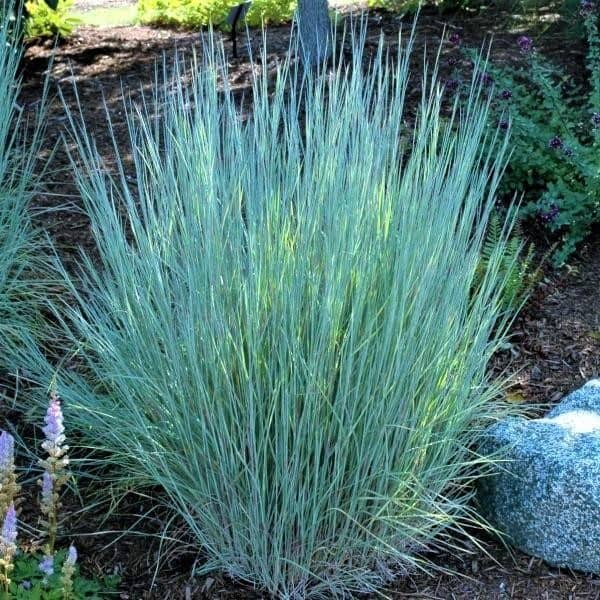
Little Bluestem Grass (Schizachyrium Scoparium)
Known for its blue-green leaf hue and tall sharp foliage, the Little Bluestem Grass provides color and can withstand various conditions. As it continues to mature, the top of its head turns a golden brown with fluffy ends and continues to drop its seeds. Commonly seen in conditions consisting of loam, sand, and medium-to-dry soil conditions. Best grown in conditions with full sun exposure; reaches a height of up to three feet and one foot wide. You can expect this native grass to bloom in the early fall season. Very adaptable for any layout needed, and strong against extreme drought.
Drought-Tolerant Landscaping Ideas
Get out, get some fresh air, and enjoy the xeric scenery of your dream landscape. A space that everyone can enjoy including our little friends. This large space includes many features that help display the conservation of water, while still being able to shimmer in its vibrant color. With a mix of perennials, annual beds, rose flower carpets, and black lace elder shrubs. These plants can be a helping hand to bring the color out in your spaces while reducing the number of grasses and non-xeric plants that require constant feeding.
Experience the vibrant colors and lusciousness of xeric features in your backyard
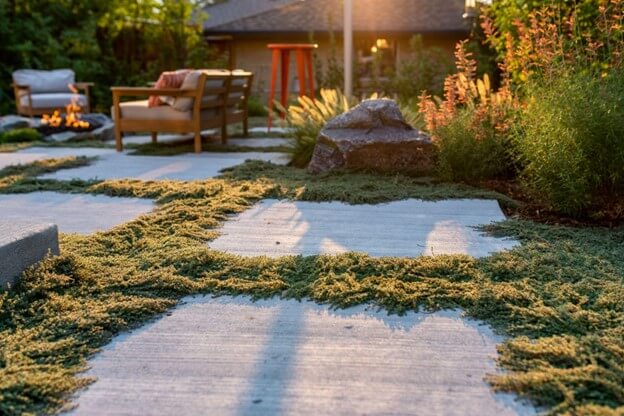
Drought-tolerant plants and features combine well with your slab walkway and stone features. From corner to corner, the wooly thyme covets the oasis, and along with the design the yard is surrounded by dwarf fountain grass and granite boulders. This design also features multiple stack gardens, islands with various xeric perennials, and trees, covered in shredded cedar mulch to retain moisture. Catered to be a hang-out spot and enjoy sometime next to the fire pit or simply spend some time in the garden.
Step into your wildest imagination when bringing to life your drought-tolerant landscape
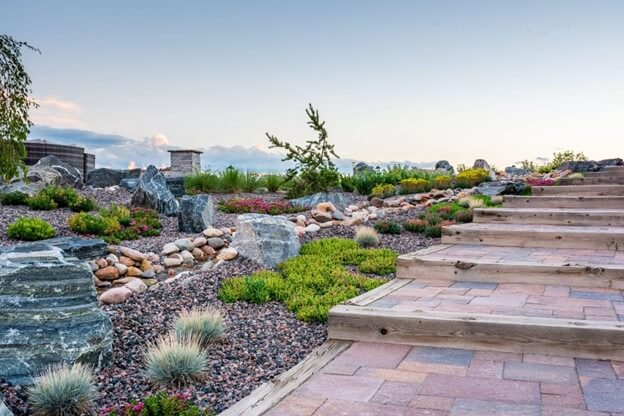
Time and conservation are common topics emphasized more than ever in our current day in age. When it comes to drought-tolerant landscaping, it is no different. We ask ourselves how can we create something that functions and is water efficient that still looks like it can blow your company away? The options are endless; with a drip-irrigation system, xeric plants like ice plants and sedums to name a few, and healthy soil integration and the use of stones, boulders, and chip granite. Some massive features that have brightened this property all together is the planting space and a minimal manicured lawn to bring the xeriscape concept full circle.
There is much ground to cover, so when plotting out your landscape design; to make this all possible, be sure to plan accordingly the placement of the rocks, boulders, mulch, and any alternative ground covers. It helps bring out the definition of your landscape features and keeping everything well organized.
Tips and Consideration
- Watering Techniques
- When feeding the plants, consider performing deep watering only a few times per week. Overwatering has been a culprit in the downfall of a plant’s health because of its drowning or decaying from its roots.
- Make sure to provide healthy soil leave the soil uncompacted. This helps keep the plant healthy and strong while allowing the watering process to be efficient and thorough.
- When watering, be sure to soak the plant from its base. Many presume to feed it from its leaves, but truth be told that is incorrect. Doing so may lead to water being trapped within the dense leaves and causing it to be an invitation to bacteria and disease infection.
- Importance of Irrigation Systems
- Irrigation systems such as soaker hoses, sprinkler systems, and drip irrigation installations can make things easier for you and your plants.
- Increasing the efficiency in water conservation and controlling where exactly the water should be spread or applied.
- Ease of access to schedule a watering session
- All systems are versatile; whether you would like to have underground systems, auto-sensing, and scheduled, the choice is yours.
- Irrigation systems such as soaker hoses, sprinkler systems, and drip irrigation installations can make things easier for you and your plants.
- Planting and Assortment
- Drought-tolerant plants don’t require to be watered often, but here are some things to keep in mind when creating or conserving a drought-tolerant environment. Keep plants of similar groups together; does not make sense to put a xeric plant next to say a perennial or a flower that is constantly needing to be fed
- Substitute your grass with the use of drought-tolerant plants. You can remove your old sod or traditional grass and provide it with a stone or sand design layout. Adding plants like succulents, cacti, and various other drought-tolerant plants.
- Use drought-tolerant grass. If you enjoy the traditional green grass look for your lawn, there are options to keep it that way. Different grass species can acclimate to dry environments and don’t require to be fed so often. Grass species such as Zoysia grass, Bent Grasses, Perennial Grasses, Fescues and grass alternatives like thyme and sedum lawns just to name a few.
- Incorporate mulch into your surroundings. Doing so can provide insulation and retain moisture in the soil. You can also incorporate the usage of organic composts. Packed with nutrients to keep the plant healthy & provides efficient retention of water and moisture.
Need Help from Landscape Professionals?
As a landscape company, we are versatile in the different types of design styles, jobs, and applications for your yard, space, or business. The landscape design principles we follow help us create visually pleasing and creative designs for all of our clients. If you would like to see what we are capable of doing with xeriscape style design or would even just love to learn more about who we are and what we stand for as a company, feel free to contact us! You can call our offices at 303-287-9113 to start your consultation or visit our gallery to see more of our recent residential and commercial projects!


